#Denishawn
Photo
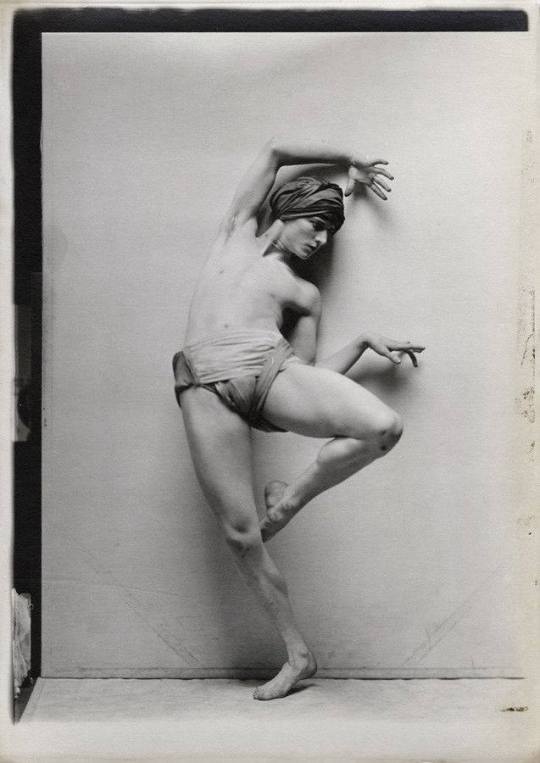
Ted Shawn by Charles Sheldon
#ted shawn#dance#ballet#dancer#danseur#ballerino#bailarín#charles sheldon#ballet history#denishawn#ted shawn and his men dancers
58 notes
·
View notes
Photo
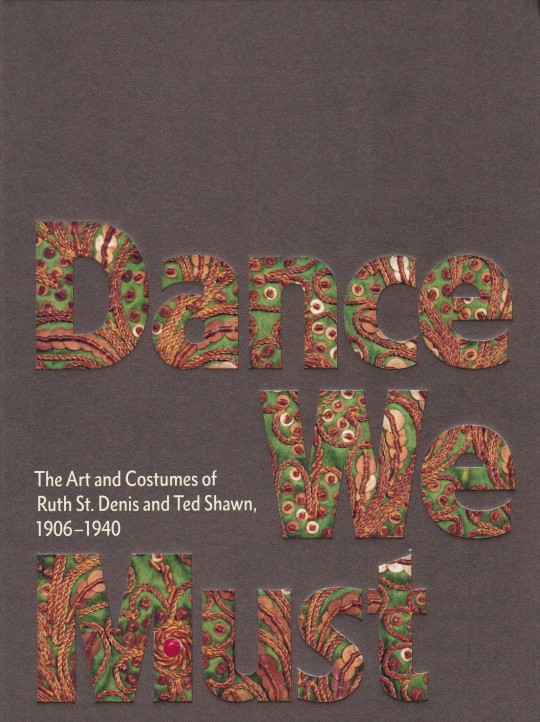



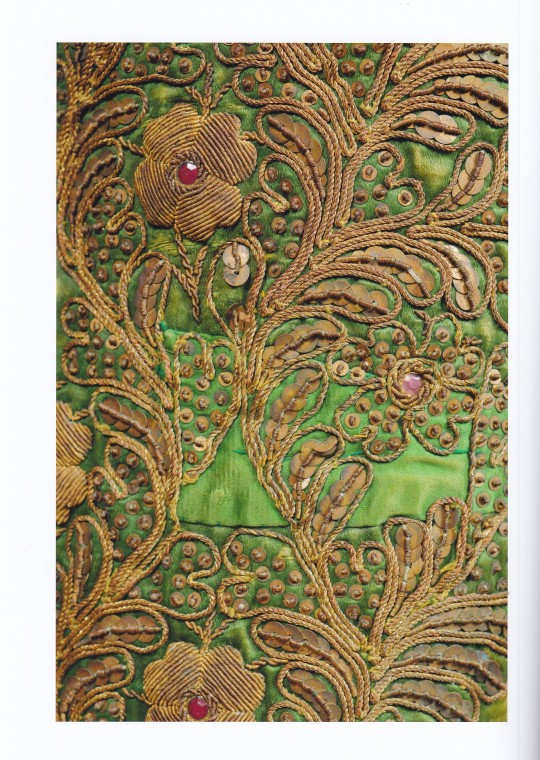
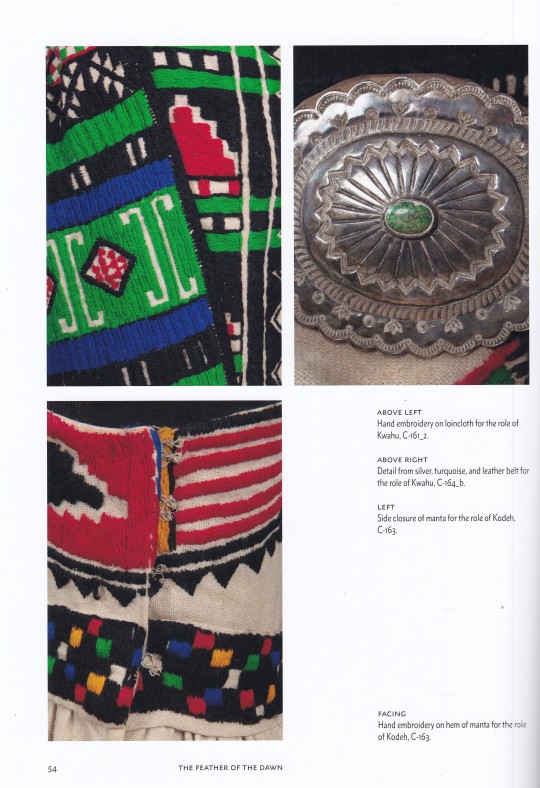

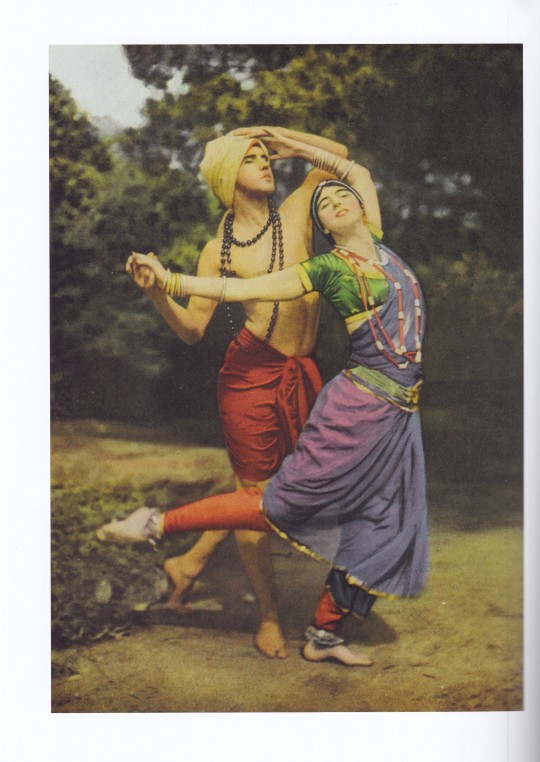
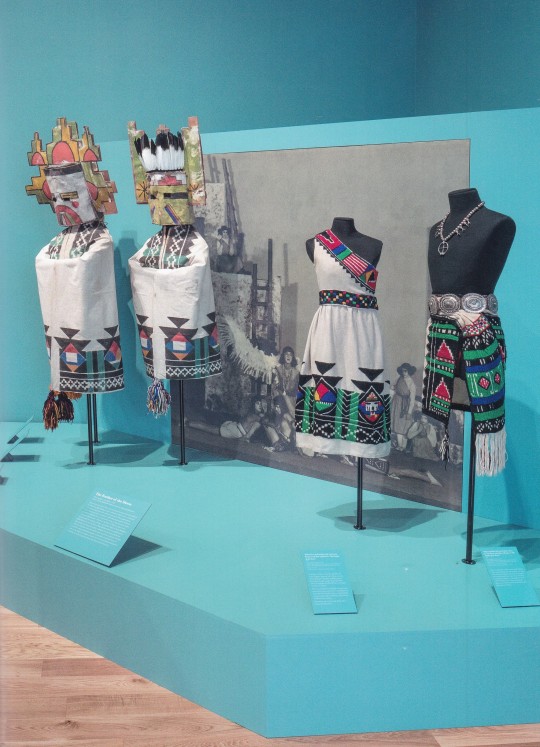

Dance We Must
The Art and Costumes of Ruth St.Denis and Ted Shawn, 1906-1940
Edited with text by Kevin M.Murphy and Caroline Hamilton
with additional contributions by Erica Dankmeyer, Panalee Maskati, Norton Owen, Thandi Steele, Munjulika R.Tarah
Williams College Museum of Art, Williamson, Massachussetts 2022, 128 pages,70 color., Hardcover, 20.96 x 26.67 cm, ISBN 9781646570270
euro 50,00
email if you want to buy [email protected]
On America's first modern dance company and its many collaborators, with reproductions of costumes, sets, ephemera and more
Ruth St Denis (1879–1968) and Ted Shawn (1891–1972) pioneered modern dance in the US with their company Denishawn, founded in 1914. Incorporating elements from ancient, non-Western and Native American sources, Denishawn became the first important American dance company. A generation of dancers and choreographers, including Martha Graham, trained and performed with the company, and many artists, including Auguste Rodin, John Singer Sargent, Katherine Dreier, Marcel Duchamp and Joseph Cornell, collaborated with them.
This catalog reproduces artwork, sets, ephemera and especially costumes, many of which have not been seen since the 1930s. Some of the materials and costumes, as well as the choreography, borrow from East and South Asian and Native American cultures, and the publication interrogates the legacy of cultural appropriation in dance. The materials also demonstrate St. Denis and Shawn’s stylistic and personal connections to American and European modernists, broadening an understanding of American dance in early modernism.
01/03/23
orders to: [email protected]
ordini a: [email protected]
twitter: @fashionbooksmi
instagram: fashionbooksmilano, designbooksmilano tumblr: fashionbooksmilano, designbooksmilano
#Ruth St.Denis#Ted Shawn#Denishawn#modern dance company#american dance company#artworks#sets#ephemera#costumes#early modernism#fashion books#fashionbooksmilano
10 notes
·
View notes
Text
Margaret Severn: Danced in Masks
Margaret Severn: Danced in Masks
I had some difficulty finding a photo of modern dancer Margaret Severn (1901-1997) that I could actually use, for the perfectly comprehensible reason that she was the kind of performer who inspired photographers…which means that most of the pix (and there are TONS of them to be seen) are art photography, and thus likely subject to copyright. After consuming this post I urge you to do a little…
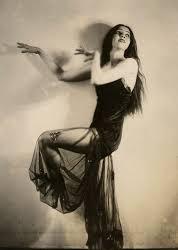
View On WordPress
5 notes
·
View notes
Text

Louise Brooks and Los Angeles: Getting the facts straight https://louisebrookssociety.blogspot.com/2024/03/louise-brooks-and-los-angeles-getting.html
1 note
·
View note
Text

Putnam & Valentine ~ Denishawn Dancers, 1918. University of Washington: Special Collections / J. Willis Sayre Collection of Theatrical Photographs (SAYRE id. 10947)
view on wordPress
#DeniShawn dancers#dance costume#tanzkostum#Putnam and Valentine#dance pose#tanzpose#dancer#Tänzerin#danseuse#danzatrice#bailarina#dancers#danseuses#denishawn dance school#denishawn dancer#1910s#Tänzerinnen
52 notes
·
View notes
Photo

Ruth St. Denis at Yosemite Valley, California, ca. 1919 - Denishawn Collection
151 notes
·
View notes
Text
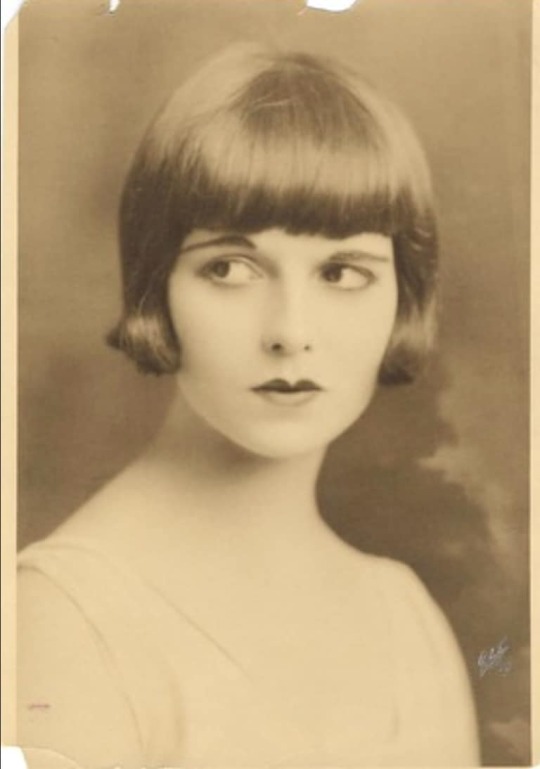
Original Photo Of Louise Brooks - By White Studio (1923)
Louise Is 16 Years Old Here -
Thi Photo Was Take For The Denishawn School Of Dancing Program That Were Sold At The Performances
Credit To James Fahey (Facebook)
#louise brooks#by white studio#1923#stunning american dancer#beauty#soon to be icon of the silent screen#16 years old#1920s#cropped photo#sepia photography
103 notes
·
View notes
Text





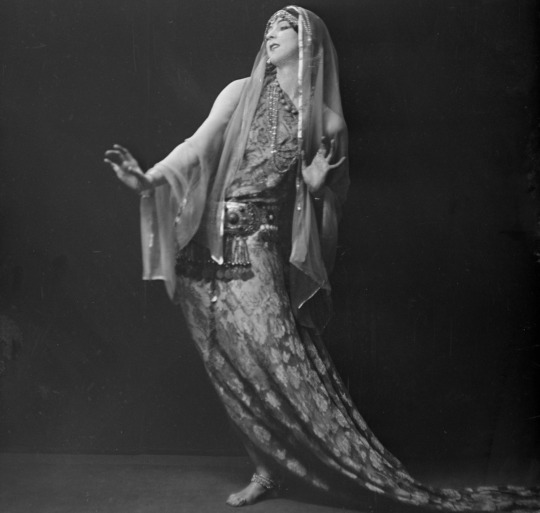
Dancers taught by the Denishawn School of Dancing and Related Arts, 1919.
#ruth st. denis#1919#dancers#dance#1900s#1910s#1910s style#1910s fashion#1910s dress#early 20th century#20th century#vintage#old photos#photography#vintage photography#1910s photography#20th century photography
108 notes
·
View notes
Text

Louise Brooks during her tour traveling with the Denishawn Dance Company, c. 1922-1923.
31 notes
·
View notes
Text
Egyptian Revival
Yesterday's post was about the full opening of Tutankhamun's tomb, but there have been several times when Egypt has had a strong influence in fashion and art, and here I selected a few things from the 1910s and 1920s that are Egyptian revival, and of course let me know which ones are your favourites of you can add some when reblogging this post.
Here we go.


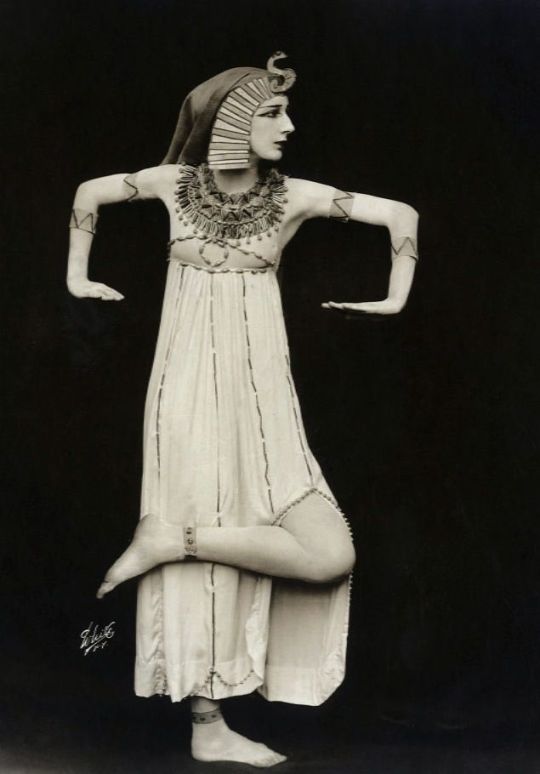
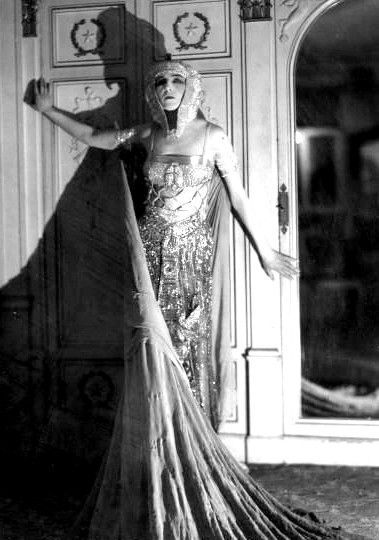

The beginning of the century marked the birth of modern dance, so we see that part of the Orientalism trend had a deep Egyptian influence from Les Ballets Russes to the Denishawn school: strong lines, profile poses, spectacular costumes, all taken from the art and sculpture of the ancient Egypt.
Here a little video of the Denishawn dancers along Ted Shawn (not the dance of the picture above), with no music because this is FROM 1913:
youtube
Also, this influence is clearly seen in the art deco masterpiece that is the dance scene from Metropolis (1927):
youtube
Denishawn students (Lillian Powell, Charlotte Brendel, Grace McCrea, Irene Pryor, Claire Niles) in an Egyptian dance created as part of a vaudeville act by Ted Shawn (not related to the Denishawn Egyptian Ballet), Hixon-Connelly, 1918, The New York City Public Library.
Vaslav Nijinsky and Serafima Astafieva in "Cleopatre", probably by Ernst Sandau, 1912, National Portrait Gallery, London.
Desiree Lubovska as Cleopatra, ca. 1915.
Ida Rubinstein with costume designed by Erté, 1920s.
Dancers from the Folies Bergère with costumes designed by Erté, Paris, 1924.
Dance of the Priest of Ra, from Dances of the Ages, Denishawn dancers, 1913.
Dance Scene, from Metropolis, Fritz Lang, 1927.






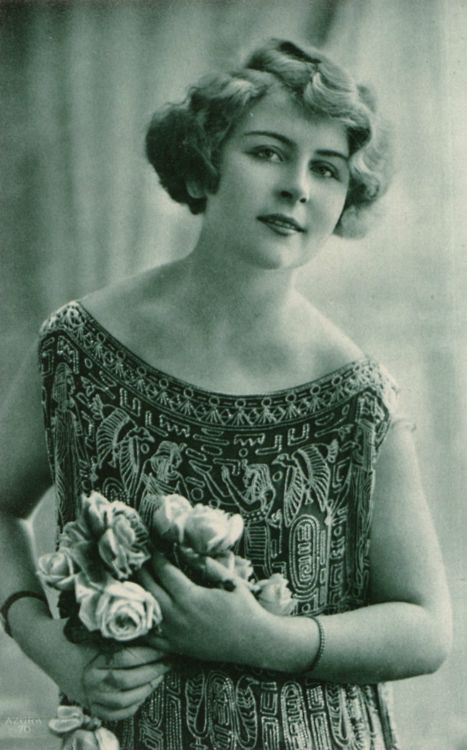
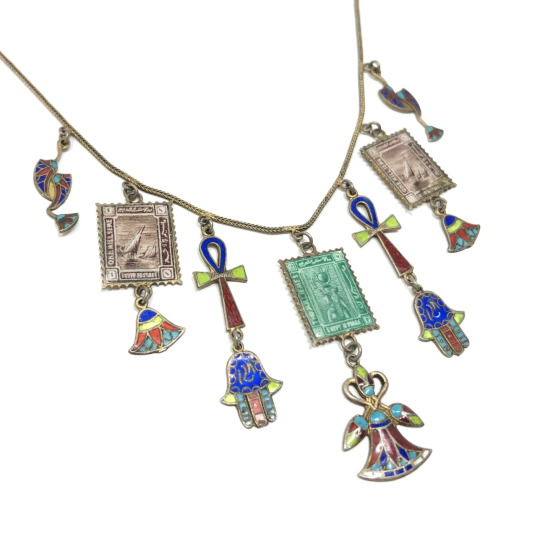
Fashion and accessories were deeply inspired by Egypt in the 1920s, thanks to the simple shapes of the garments, the use of striking accessories and jewelry, and the use of embellishments and embroidery to elevate the simple dresses: from appliqués to bead embroidery, to burnt velvet and translucent layers. And of course, let's not forget the use of colour that gives the feel of ancient Egyptian art: gold, sand, teal, royal blue, and burnt orange.
Orange burnout velvet dress, 1920s, available in Antique Graces.
Egyptian revival brooch, Max Neiger, 1920s, sold at auction.
Egyptian revival silk dress with appliqués, 1920s, Stephens College Costume Museum.
"Cleopatre" grande robe du soir by Jean Patou, Les Modes, september 1921 (click that link! You can read the whole magazine!).
Evening dress, Thurn, 1923-26, Metropolitan Museum of Art.
Pair of leather gloves with silk embroidery, ca. 1925, LACMA.
Beaded Egyptian revival dress, 1920s.
Egyptian revival silver gild and enamel charms necklace, 1920s, on sale on etsy.
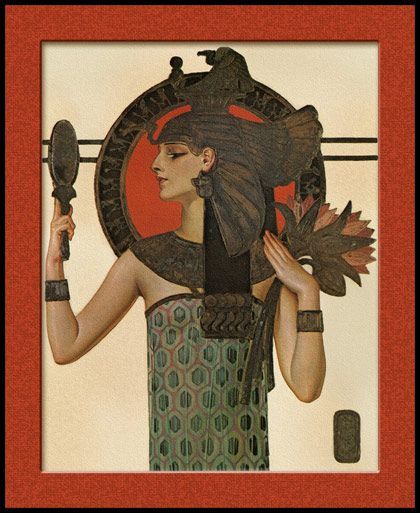
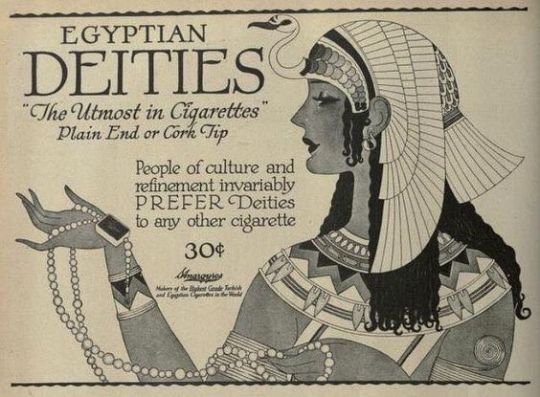


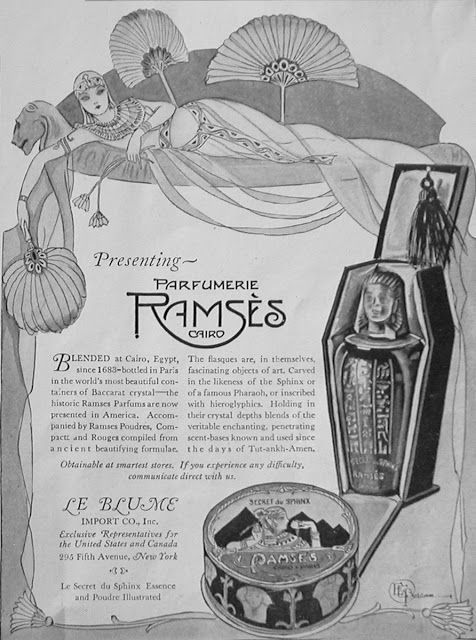
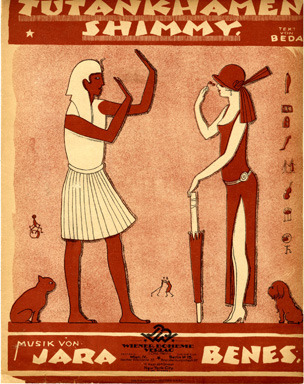
Of course, let's not forget the graphic arts. illustration was a key for advertising and communication when colour photos were not available. Here a small selection of my favourites:
"Cleopatra", J.C. Leyendecker, for the cover of the Evening Standard, August 1923.
Ad for Egyptian Deities cigarettes, 1920s-30s.
Egyptian Goddess, ca. 1929, George Barbier.
Ramses perfume ad, 1923.
Cover for Harper's Bazaar, February 1927, Erté.
Music sheet cover for the Tutankhamen Shimmy, 1923.
And finally an extra: a Tutankhamen shimmy recorded in 1926:
youtube
#1920s#1910s#1900s#egyptian revival#fashion#music#dance#fashion history#dance history#art#egypt#Youtube
224 notes
·
View notes
Text
THIS DAY IN GAY HISTORY
based on: The White Crane Institute's 'Gay Wisdom', Gay Birthdays, Gay For Today, Famous GLBT, glbt-Gay Encylopedia, Today in Gay History, Wikipedia, and more … April 27



1906 – Friedrich-Paul von Groszheim (d.circa 2003), born in Lübeck, Germany was an ordinary German man who was imprisoned by the Nazis for the (then) crime of homosexuality under Germany's now-repealed Paragraph 175.
Von Groszheim was one of 230 men arrested in Lübeck on suspicion of being gay by the SS in January 1937 under paragraph 175, which outlawed homosexuality. He was imprisoned for ten months, during which he had to wear a badge emblazoned with a capital A, for Arschficker (arse-fucker):
They beat us to a pulp. I couldn't lie down...my whole back (was) bloody. You were beaten until you finally named names.
Von Groszheim was held in a cell with no heating, very little food, and no toilet facilities. Freed, he was rearrested in 1938 and tortured. Von Groszheim was eventually offered the 'alternative' of castration or Sachsenhausen concentration camp. He 'chose' castration. Terrible as it may seem, it was a decision that probably saved his life. He was then released.
Because of the castration, von Groszheim was rejected as physically unfit for military service in 1940. In 1943 he was arrested a third time, this time as a supporter of the former Kaiser Wilhelm II, and imprisoned as a political prisoner at Neuengamme concentration camp.
After the war, he settled in Hamburg.
Von Groszheim was never acknowledged as a victim of the Nazi regime, and due to on-going persecution of homosexuals in Germany, it took nearly half a century before he broke his silence. Eventually he explained why he began to speak out: 'I'm living proof that Hitler didn't win. I'm aware of that every day. If I don't tell my story, who will know the truth?.' He only told his story in 1992, on We Were Marked with a Big "A", a film in German with English subtitles.
In 1995, he was one of eight signers to a declaration given to the US Holocaust Memorial Museum in Washington, D.C. that called for the "memorializing and documenting of Nazi atrocities against homosexuals and others."

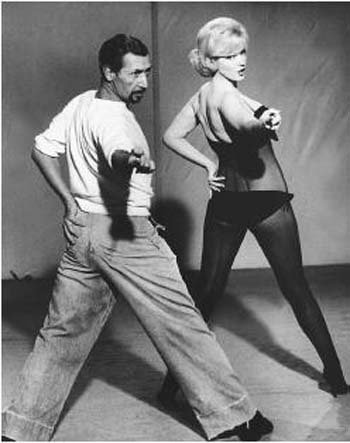
Jack Cole rehearsing Marilyn Monroe
1911 – Jack Cole (d.1974) was an American dancer, choreographer, and theatre director known as the father of theatrical jazz dance. He developed an entirely personal mode of jazz-ethnic-ballet that prevails as the dominant look of and technique for dancing in today's musicals, films, nightclub revues, television commercials and music videos.
Jack Cole, a student of Ravi Shankar's older brother Uday (who popularized East Indian dance in the West), danced with the staid orientalist Denishawn troupe, and invented jazz dance by applying what he knew of Indian dance to jazz music.
He stripped in Broadway's Ziegfield Follies Of 1943, opened New York's Rainbow Room, and formed a troupe that eroticized the Radio City Music Hall, Roxy, Ciro's, and the Fairmont and Dunes hotels.
His Hollywood entrance didn't go well: his specialty number for Fox's Moon Over Miami (1941) was cut as too sexy and he was fired by Arthur Freed from MGM's Ziegfield Follies (1946), for "griping about all the 'queen bees' like Cedric Gibbons and Roger Edens." Minnelli, Gibbons, et al, worked within the MGM closet, but Cole was a rebel and didn't hide his gayness.
At Columbia, then a minor studio, he lasted from 1944 until the McCarthy hearings of 1948, when most of his dancers fled to Europe. His first Columbia film was Cover Girl (1944) with Rita Hayworth, working with Gene Kelly, Stanley Donen, and Felix. He worked with Ann Miller and thrice more with Hayworth, his eroticism transferred almost intact to her in the 'Put the Blame on Mame' number in Gilda (1946), his homoeroticism most pronounced in the satirical 'Greek Ballet' in Down To Earth (1947). When Gilda describing herself stops in midsentence, the next word could be "stripper," for Cole based her movements on striptease.
At Fox, Cole vitalized Gwen Verdon in On The Riviera, revitalized Betty Grable in Meet Me After The Show (both 1951), surrounded Mitzi Gaynor with slinky catmen in The I Don't Care Girl (1953) and became Marilyn Monroe's dance guru from Gentlemen Prefer Blondes (1953) until the end of her life, surrounding her with musclemen in There's No Business Like Show Business (1954).
He returned to Metro for Vincente Minnelli's Kismet (1955; he had done the Broadway show and the 1944 film); Designing Woman; and, with Gene Kelly, Les Girls (1957).
Back at Columbia, he gave Betty Grable a male harem in Three For The Show (1955). His gayness was hidden within his Orientalism, suggesting to Shirley McLean that "masculinity and gay identity" are not necessarily antithetical, erasing gender (unlike true oriental dance), and sought after by female dancers.
But "for gay audiences, the classic Cole number" is 'Is There Anyone Here For Love?' in Gentlemen Prefer Blondes, featuring Physique Pictorial-type gymnasts oblivious to Jane Russell's charms: they even pump "their buttocks up and down in rhythm, an outrageous simulation of gay sex."
Cole lived openly in a mansion with his lover, David Gray. Their pool parties were "very naughty and very gay," with Gray on a diving board in high heels. At a 1974 memorial for Cole, Jane Russell reminisced about Cole's penchant for gay porn.


1951 – Luis Zapata Quiroz is Mexico's most prominent gay author. He rose to popularity in the 1970s with books about the youth subculture of Mexico City. His novels examine the connection between daily life and the popular culture of radio, television, and film.
Born into an upper middle-class family in rural Mexico, Zapata escaped the restrictions of his background by losing himself in the cinema. Popular culture, cinema, melodrama and soap opera have all played a significant influence on his writing.
Unusually for a Mexican writer, most of his novels, and stories feature gay and bisexual characters prominently. Where heterosexual characters appear they are usually within the context of the family and there is some element of hypocrisy and concealment, so the happiness of the normal social order is in some way seen as a smokescreen for more interesting goings on beneath the surface - as is the case with much popular drama and soap opera. His style is very heavily reliant on representing convincing dialogue and conversation - often between people of different social classes.
His work includes Hasta en las mejores familias (Even in the Best Families, 1975), Las aventuras, desventuras y sueños de Adonis García, el vampiro de la colonia Roma ( The Aventures, Misadventures, and Dreams of Adonis Garcia, Vampire of the Roman Colony, 1979), Melodrama (1983), En jirones (In Shreds, 1985) and La hermana secreta de Angélica María (The Secret Sister of Angelica María, 1989)


1953 – President Dwight D. Eisenhower signs Executive Order 10450 which establishes grounds for investigation and dismissal: "Any criminal, infamous, dishonest, immoral, or notoriously disgraceful conduct, habitual use of intoxicants to excess, drug addiction, or sexual perversion." Without explicitly referring to homosexuality, the executive order responded to several years of charges that the presence of homosexual employees in the State Department posed blackmail risks. As a result, more than 640 federal employees lose their jobs over the next year and a half.


1963 – Today's the birthday of Russell T. Davies (born Steven Russell Davies). Davies is a Welsh television producer and writer and the prolific writer best known for controversial drama serials such as Queer as Folk and The Second Coming. He's also garnered major Geek love for spearheading the revival of the popular science-fiction television series Doctor Who, and the spin-off Torchwood. Although Doctor Who always had serious levels of camp, Davies really stretched the series into a much more inclusive and sexually playful character.
Born in Swansea, Davies aspired to work as a comic artist in his adult life, until a careers advisor at his school suggested that he study English literature; he consequently focused on a career of play- and screen-writing. After he graduated from Oxford University, Davies joined the BBC's children's department on a part-time basis in 1985 and worked in varying positions, including writing and producing two series, Dark Season and Century Falls. He left the BBC in the early 1990s to work for Granada Television and later became a freelance writer.
Davies moved into writing adult television dramas in 1994. His early scripts generally explored concepts of religion and sexuality among various backdrops: Revelations was a soap opera about organised religion and featured a lesbian vicar; Springhill was a soap drama about a Catholic family in contemporary Liverpool; The Grand explored society's opinion of subjects such as prostitution, abortion, and homosexuality during the interwar period; and Queer as Folk, his first prolific series, recreated his experiences in the Manchester gay scene. His later series include Bob & Rose, which portrayed a gay man who fell in love with a woman; The Second Coming, which focused on the second coming and deicide of Jesus Christ; Mine All Mine, a comedy about a family who discover they owned the entire city of Swansea; and Casanova, an adaptation of the Venetian lover's complete memoirs.
His most notable achievement is reviving and running the science fiction series Doctor Who after a sixteen year hiatus, with Christopher Eccleston, and later David Tennant, Matt Smith, and Peter Capaldi in the title role of the Doctor. Davies was awarded an OBE in 2008 for services to drama, which coincided with his announcement that he would step down from as the show's executive producer with his final script, The End of Time (2009-10). Davies moved to Los Angeles, California, to oversee production of Torchwood: Miracle Day and, before the death of Elisabeth Sladen, series five of The Sarah Jane Adventures.He has since returned to Manchester.
His latest show, Cucumber, a spiritual successor to Queer as Folk focuses on middle-aged gay men in the Manchester gay scene, and is accompanied with Banana, an E4 anthology series featuring younger characters across the LGBT spectrum on the periphery of the Cucumber narrative, and Tofu, an online documentary series available on 4oD discussing modern sex, sexuality and issues arisen during the show with the cast and public. The three names reference a urological scale categorising the male erection by hardness from tofu to cucumber, and are used to symbolise differences in sexual attitudes and behaviour between the two generations. Although Cucumber is designed as a self-contained serial focusing on the life of one man, Davies envisions Banana as open-ended and believes it could continue after its sister series finishes.
Davies' next project after Cucumber and Banana will be The Boys, a Channel 4 series about the HIV/AIDS crisis during the 1980s. The Boys will be a dramatised retrospective of the crisis which focuses on the men "living in the bedsits" during the 1980s as opposed to films such as Pride which focus on gay activists; Davies notes that the stories regarding the politics of the crisis and the virus itself has been told, but not those regarding the early victims of the virus itself. Davies describes The Boys as a way of "coming to terms" with his own actions during the 1980s, when the shock of the crisis prevented him from properly mourning the deaths of his close friends. After The Boys, Davies plans to write a series about sextortion that draws inspiration from real-life incidents of blackmail that resulted in suicide.
Davies is openly gay and has been with his partner, customs officer Andrew Smith, since 1999.

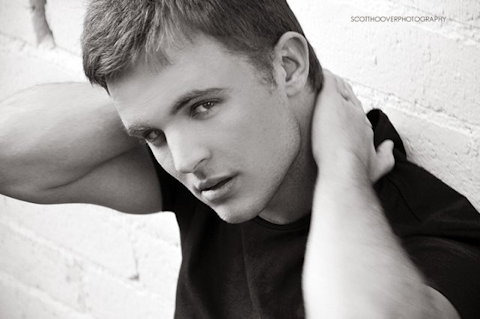
1992 – James Duke Mason is an American politician, writer, and political activist. He is the son of singer Belinda Carlisle and film producer Morgan Mason, and the grandson of the late British actor James Mason. In 2010, The Advocate listed Mason as one of the most influential young LGBT Americans in their "Forty Under 40" issue. He was named in OUT magazine's 2011 "Out 100" issue as one of the 100 most influential LGBT people in the world.
Born in Los Angeles, Mason moved to Europe with his parents as a child. In an Attitude Magazine interview, Mason stated that he is openly gay and that he came out to his family and friends at the age of 14 in 2006. After graduating from Mougins School, an international school in the south of France in July 2010, Mason moved back to the U.S. to study Political Science at California Lutheran University. After a year he moved to West Hollywood, California to focus on his efforts in grassroots advocacy.
He was appointed to serve as a Page in the U.S. House of Representatives during the summer of 2008, and also worked as a volunteer for Hillary Clinton during the 2008 Democratic primaries. He has appeared on TV shows such as Dr. Phil, Nancy Grace, and Politicking with Larry King to discuss LGBT issues, has written articles for websites such as The Huffington Post and The Advocate, and did a YouTube video to back the It Gets Better campaign.
In December 2011 it was announced that Mason was appointed to the board of directors of Outfest, making him the youngest member in the organization's 30-year history. He began his term in January 2012.
He served as an official surrogate for the campaign of Barack Obama in the 2012 U.S. Presidential Election. He had a small acting role in the film What Happens Next, which screened as part of the Hollywood Film Festival. He was a candidate for the West Hollywood City Council in the March 3, 2015 election.


1998 – Ghislaine Landry is a Canadian rugby union player. She won a gold medal at the 2015 Pan American Games as a member of the Canadian women's rugby sevens team. During the 2016-17 season, Landry succeeded Jen Kish as captain of the national sevens. On 20 October 2018, Landry became the first woman to hit the 1,000 point milestone in the women's sevens World Series.
In 2016, Landry was named to Canada's first ever women's rugby sevens Olympic team, which won the bronze medal in a match against Great Britain. In 2017, Landry moved into first place all-time in HSBC World Rugby Women's Sevens Series scoring with 706 points. In June 2021, Landry was named to Canada's 2020 Summer Olympics team.
Landry attended Saint Francis Xavier University.
She came out as homosexual in 2006 and married her partner in 2018.
In 2021, she announced her retirement from the sport, hanging up the boots at the age of 33 after an illustrious international career that spanned a decade.


2009 – Iowa becomes the third state to allow same-sex marriage.


12 notes
·
View notes
Text
Ruth St. Denis circa 1920s.
An American pioneer of modern dance. She was the co-founder of the American Denishawn School of Dancing and Related Arts and the teacher of several notable performers.

67 notes
·
View notes
Text
Louise Brooks - The Flapper Icon












Mary Louise Brooks (born in Cherryvale, Kansas on November 14, 1906) was an American film actress during the 1920s and 1930s. She is regarded today as "The Flapper Icon," in part due to her trend-setting bob hairstyle and modern fashion sense. Those that do not recognize her name almost certainly know her look.
Born in a typical a typical Midwestern community, Brooks joined the Denishawn School of Dancing and Related Arts in Los Angeles at the age of 15. She soon found work a as a chorus girl in George White's Scandals and as a dancer in the Ziegfeld Follies in New York City.
Her Follies stint attracted the attention of Walter Wanger, a producer at Paramount Pictures. He had her sign a contract with the studio in 1925. During this time, Brooks gained a cult following in Europe for her role in the Howard Hawks' film A Girl in Every Port (1928).
Dissatisfied with her mediocre roles in Hollywood films, Brooks went to Germany in 1929 and starred in some of the silent era's films, including Pandora's Box (1929).
When Brooks returned to Hollywood in 1931, she was cast in some mainstream films such as God's Gift to Women (1931). However, her career prospects as a film actress significantly declined by 1940. Brooks briefly returned to Wichita, where she was raised, and then moved to New York City, where she worked numerous jobs.
Following the rediscovery of her films by cinephiles in the 1950s, Brooks began writing articles about her film career and had had special relationships with film historians James Card, John Kobal, and Kevin Brownlow.
After suffering from degenerative osteoarthritis and emphysema for many years, Brooks died of a heart attack in her apartment in Rochester, New York at 78.
Legacy:
Served as the inspiration for the long-running Dixie Dugan (1929-1966) newspaper strip by John H. Striebel, the comic books of Valentina (1965-1996) of Guido Crepax, and Ivy Pepper in Tracy Butler's Lackadaisy (2006-2020) comic series
Is the basis of the movie Show Girl (1928) and its subsequent musical Show Girl (1929), and the graphic novel entitled Louise Brooks: Detective (2015)
Opened a dance studio in Beverly Hills and Wichita, Kansas in the 1940s
Authored a booklet titled The Fundamentals of Good Ballroom Dancing in 1940
Became a noted film writer in the late 1950s for various journals like Film Culture and Sight and Sound
Inspired many cinematic and literary characters such as Sally Bowles in Bob Fosse's Cabaret (1972) and Lulu in Something Wild (1986)
Published a collection of autobiographical essays, Lulu in Hollywood, in 1982, which was ranked number 44 in the Hollywood Reporter's "100 best film books of all time" in 2023 and number 28 in the Los Angeles Times' "50 best Hollywood books of all time" in 2024
Presented with the George Eastman Award for Distinguished Contribution to the Art of Film in the 1982 Festival of Film Artists
Ranked number 44 by Empire magazine's 100 sexiest stars in film history in 1995
Is the subject of the Emmy-nominated documentary Louise Brooks: Looking for Lulu, which was commissioned by Turner Classic Movies in 1998
Is a central character in the PBS film The Chaperone (2018), which depicts her initial arrival in New York
#Louise Brooks#Flappers#Flapper Icons#The Flapper#The Flapper Icon#Lulu#Lulu in Hollywood#Silent Films#Silent Movies#Silent Era#Silent Film Stars#Golden Age of Hollywood#Classic Hollywood#Film Classics#Classic Films#Old Hollywood#Vintage Hollywood#Hollywood#Movie Star#Hollywood Walk of Fame#Walk of Fame#Movie Legends#Actress#hollywood actresses#hollywood icons#hollywood legend#movie stars#1900s
2 notes
·
View notes
Text
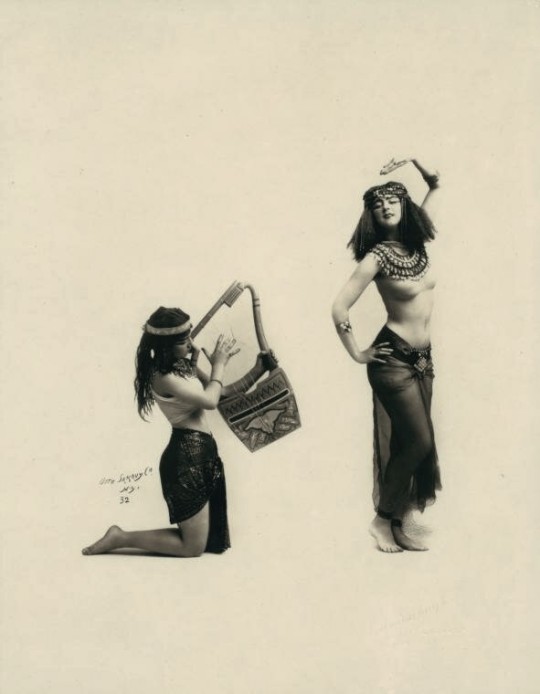
Ruth St. Denis (born Ruth Denis; January 20, 1879 – July 21, 1968) was an American pioneer of modern dance, introducing eastern ideas into the art. She was the co-founder of the American Denishawn School of Dancing and Related Arts and the teacher of several notable performers.
16 notes
·
View notes
Text

Ph : Orval Hixon (1922)
Vanda Hoff (Denishawn Dancer)
2 notes
·
View notes
Photo
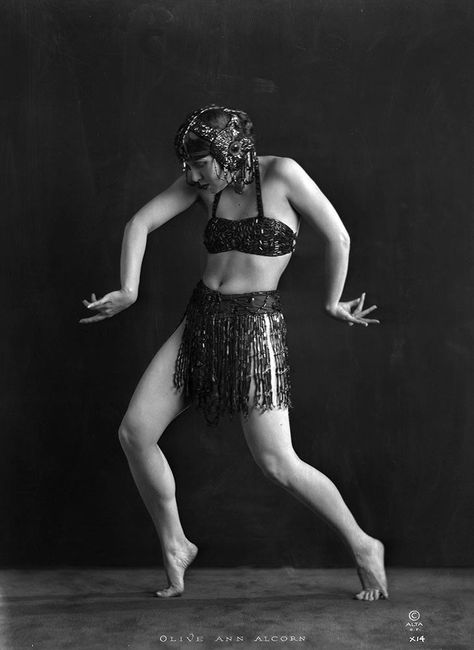

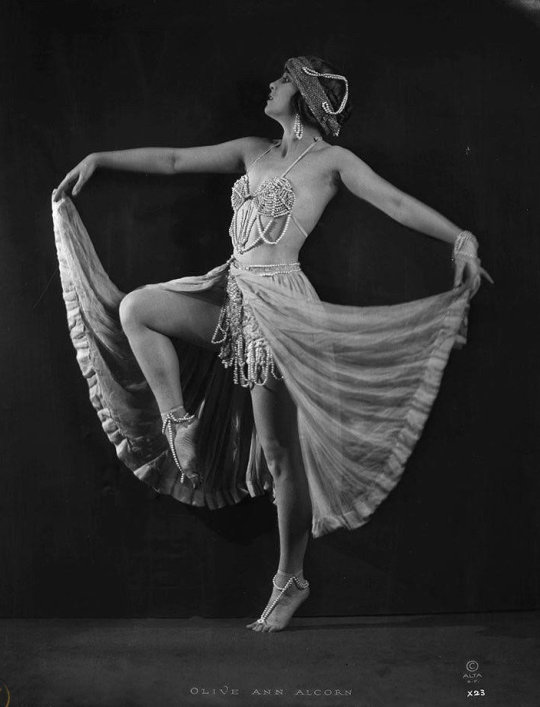
Olive Ann Alcorn (1900 – 1972) was an American dancer, model, and silent filmactress of the 1910s and 1920s. She is better remembered today for the numerous nude photographs of her from the era than for her film work.
Olive Ann was born in Stillwater, Minnesota. She graduated from the Denishawn School of Dancing and Related Arts, and was a member of the Denishawn Players which toured across the nation putting on performances in theaters and auditoriums.
After 1928 little is known about Olive Ann Alcorn, though it is believed she continued her involvement in dance. She married twice, her first husband being Louis H. Scherer (divorced 1925) and her second husband being Harry Singer (married May 22, 1928).
During her younger years she posed for photographer Alexander Stark (Alta Studios).
See more via Wordpress
14 notes
·
View notes